
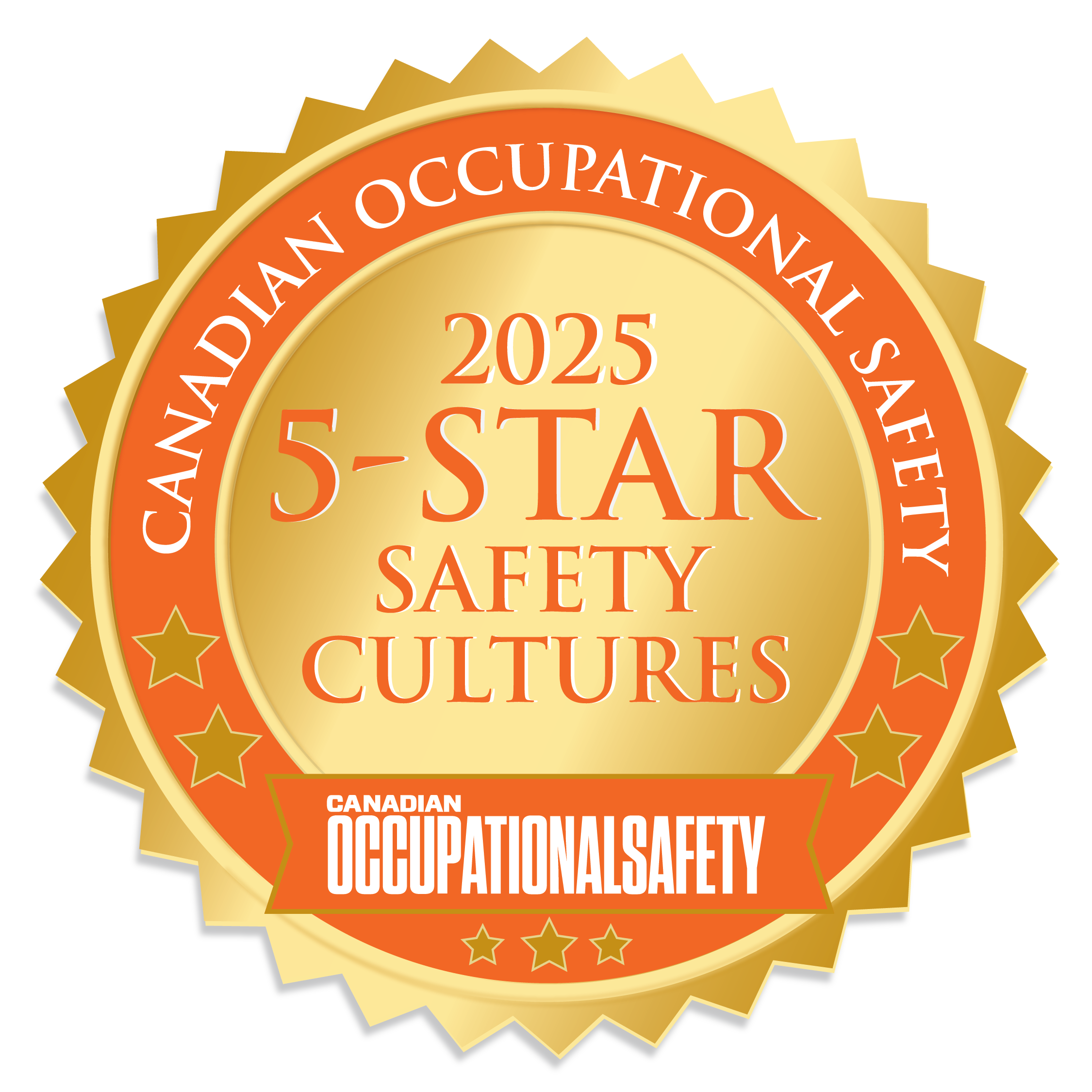
Jump to winners | Jump to methodology
Not too long ago, acronyms such as SIF and HOP weren’t part of everyday business conversations. But today, Serious Injury and Fatality and Human and Organizational Performance are commonplace – a sign of just how quickly Canadian safety standards have evolved.
“In the early 2000s, you may have been leading edge with a program that included external audits, leading and lagging indicators, and well-defined procedures; however, in 2025, those areas are now the minimum,” says Ryan Jacobson, CEO of Saskatchewan Safety Council. “Leading workplace safety programs need to push beyond the basics, delving into data analytics, qualitative and quantitative assessments, and competency verification systems, among other things.”
The major drivers of the increase in sophistication across the OHS sector have been:
data analytics
resource allocation
The combination of these factors has enabled firms and organizations to understand what dangers and threats they face and how to tackle them.
Jacobson explains, “AI is also a new tool being utilized to analyze data to predict areas requiring attention. In a perfect world, we want to prevent all injuries, of course, but many businesses have to make difficult decisions on resource allocation. Senior leadership may come to the inevitable question, ‘Do you want to prevent 1,000 paper cuts or a single fatality?’”
The importance of the best safety cultures in Canadian workplaces is stark, despite tech and resource advancement.
Data from Ontario’s Workplace Safety and Insurance Board (WSIB) shows that annual deaths exceed 200 and the cost of injuries runs into the hundreds of millions.

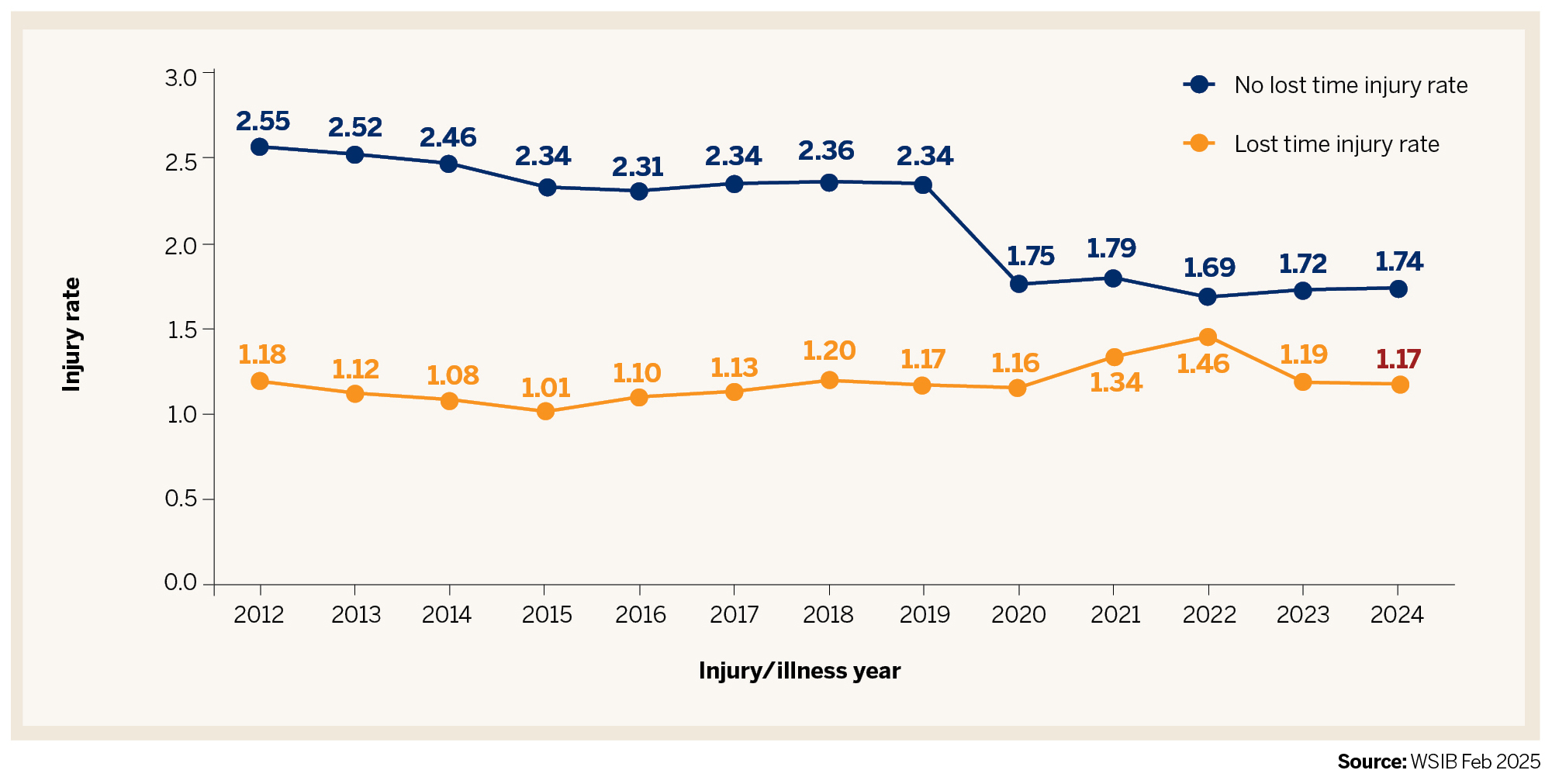

Data from the Workers’ Compensation Board (WCB) of Nova Scotia shows that, sadly, fatalities and injuries are still an issue.
“Workplace deaths leave families having to navigate the loss of a loved one from an event that is not only tragic but, in many cases, preventable,” says WCB CEO Karen Adams. “It’s a type of grief no one should have to cope with.”
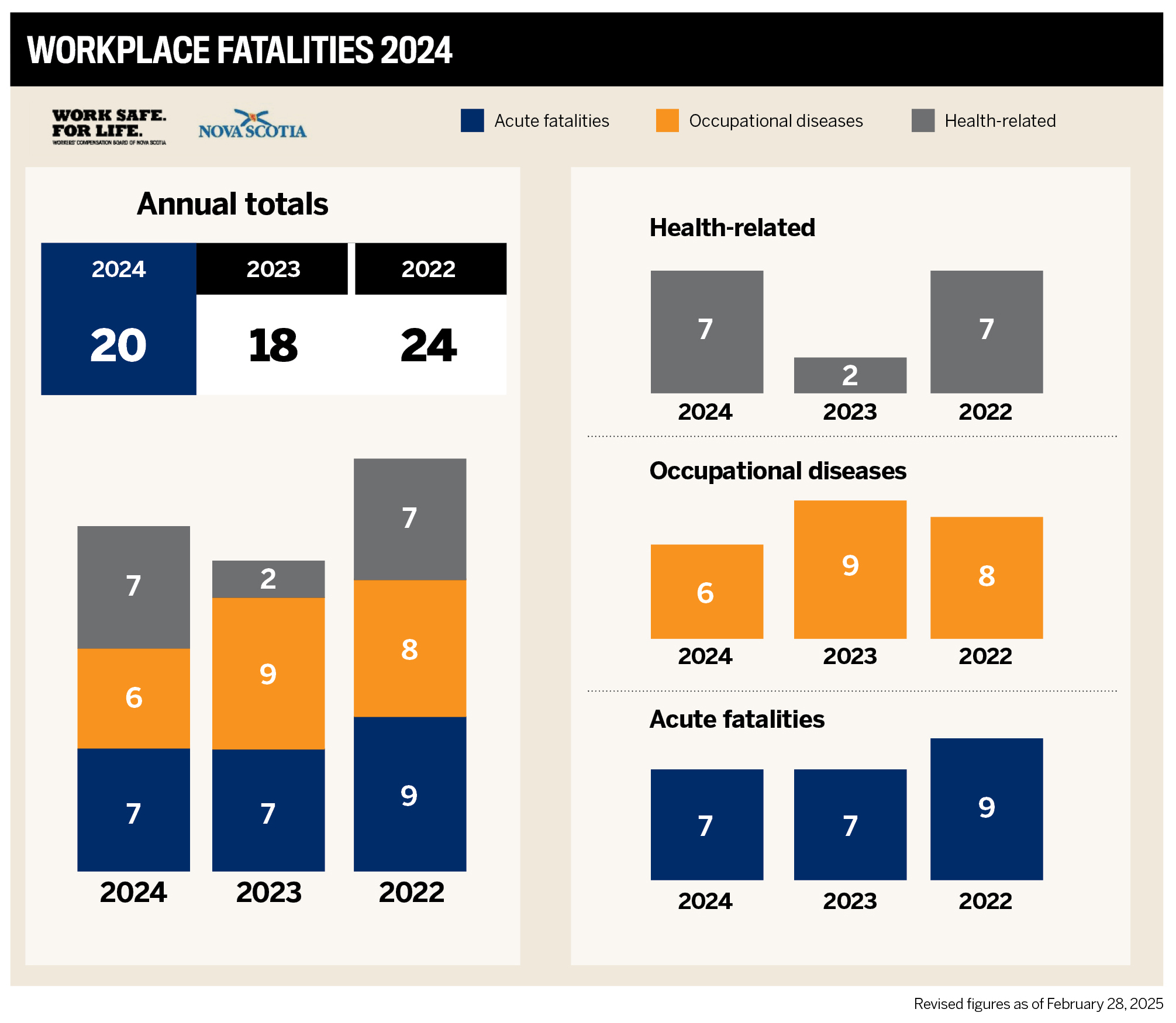
Similarly, the seriousness of safety culture is also highlighted by statistics from the Workers’ Compensation Board of British Columbia (WorkSafeBC). They show that while deaths are above 120 annually, there is somewhat of an inverse relationship between deaths and the number of workers, highlighting improving safety standards.
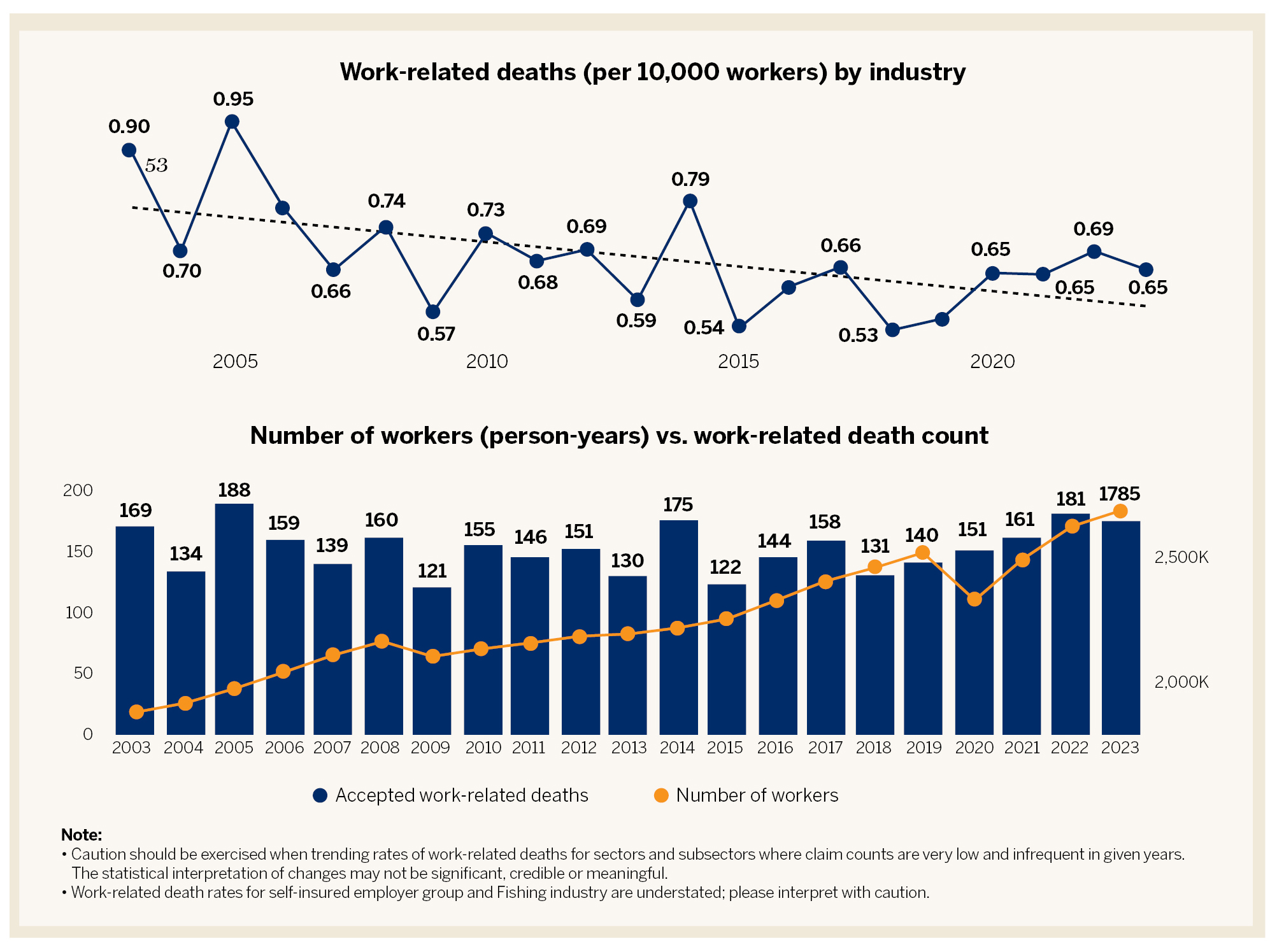
Leading this movement and industry trends are those organizations recognized as 5-Star Safety Cultures by Canadian Occupational Safety. The prestigious list was determined by employees, who rated their employers across a range of crucial metrics following initial submissions.

HQ: Mississauga, Ontario
Industry: Real estate
Employee size: 500+
Morguard’s success is built on developing and implementing its Occupational Health and Safety Management Program. Due to its size, the firm operates an inclusive culture with employees, contractors, and visitors driving continuous improvement.
Over the past year, an OHS awareness campaign was launched, using the company’s corporate-wide safety framework to deliver engaging awareness sessions via Microsoft Teams. This approach ensured that employees across all six provinces – British Columbia, Alberta, Saskatchewan, Manitoba, Ontario, and Quebec – had easy access to vital safety information, no matter where they were.
Cesar Alejandro Paredes, OHS manager, says, “By enhancing compliance and strengthening workplace safety and culture, we reaffirm our commitment to a safe workplace environment.”
Morguard integrates both online and in-person OHS training into its safety framework for a well-rounded worker participation experience. The firm’s hybrid approach accommodates diverse learning preferences while reinforcing its commitment to workplace safety via:
online training serves as a foundational learning tool
property specific certification training that improves worker competency and safety awareness
The firm also focused on its Occupational Hygiene and Environmental initiatives to evaluate and improve its Corporate Legionella Management Plan (CLMP). By utilizing the EnviroLink network, the OHS department conducted an equipment survey to identify properties that may need to action the CLMP.


“This proactive approach enhances our commitment to building equipment safety,” explains Paredes.
Mental health is another area of importance, and Morguard supports employee mental wellness through its participation with SunLife Health and the Dialogue Employee Assistance Program. Staff can access it via their desktop or the mobile Sunlife Health app.
Additionally, the OHS department hosted two awareness sessions featuring external guest speakers and topics:
employee wellness saw 88 participants
psychological health and safety recorded 91 participants
These efforts have seen Morguard maintain an overall injury/accident rate of 0.03 percent over the previous two years. In 2023, there were 28 workplace injuries/accidents reported across 121 active properties, while in 2024, it was 29 workplace injuries/accidents across 130 properties.
Paredes adds, “This reinforces our dedication to maintaining a safe work environment.”
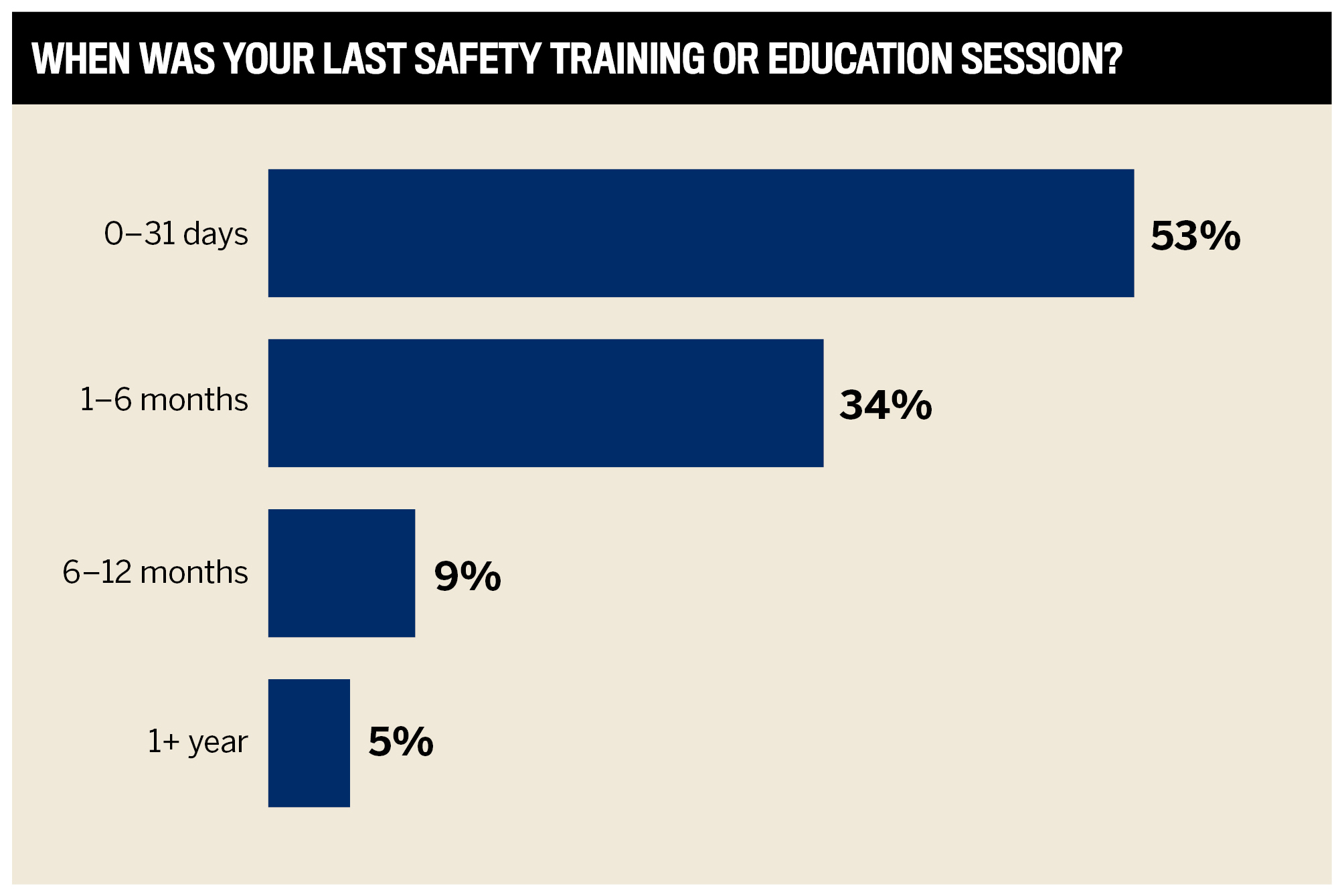
HQ: Valleyview, Alberta
Industry: Municipality
Employee size: 1–299
Maintaining a comprehensive approach to safety – addressing both mental and physical well-being – is no small task for Greenview, given its vast geography and the four communities it serves. Effective coordination requires careful planning and a clear strategic vision to ensure that every area within the municipality is well-represented and supported.
“We empower our employees to take ownership of safety, encouraging their feedback, ideas, and involvement,” says director of corporate Services, Ed Kaemingh. “Leadership reinforces this commitment daily, setting the standard for a workplace where safety is always the top priority.”
Since 2021, the organization’s Psychological Health and Safety Committee has conducted Guarding Minds at Work survey with staff to assess and address psychosocial factors that impact psychological health and safety.
“It measures employee perceptions of the organization’s psychological health and safety, identifying both potential strengths and opportunities for improvement. In our most recent survey, addressing the feeling of burnout was identified as an area where Greenview could support staff,” says Kaemingh.
In response, a professional was engaged to present a seminar focused on burnout and resiliency. It featured two sessions:
leadership: 10 Essential Team Needs to Encourage Engagement, Productivity, and Combat Mental Fatigue and Burnout
all staff: Harness Your Energy and Build Your Resilience – Everyday Lessons to De-Stress, Decompress, and Engage More in Life
In addition, there is Mental Health Week featuring speakers, webinars, and videos on mental health, fatigue, stress management, and reducing stigma. To further support employee well-being, wellness baskets are distributed to all Greenview facilities, providing words of encouragement through give-one/take-one tabs and posters and promotion of coffee time sessions with colouring books and puzzles.


Kaemingh comments, “These initiatives help staff alleviate anxiety, manage tension, and incorporate mindfulness into their daily routines.”
Greenview has embraced tech and the remote nature of safety training but doesn’t view it as the optimum solution.
“While online training offers a cost-efficient solution, we find that in-person training is more engaging and impactful. Being away from computers, phones, and other distractions allows employees to fully immerse themselves in learning while fostering interdepartmental connections and collaboration,” adds Kaemingh.
Internal data for 2024 recorded an improvement in reported injuries relative to 2023.
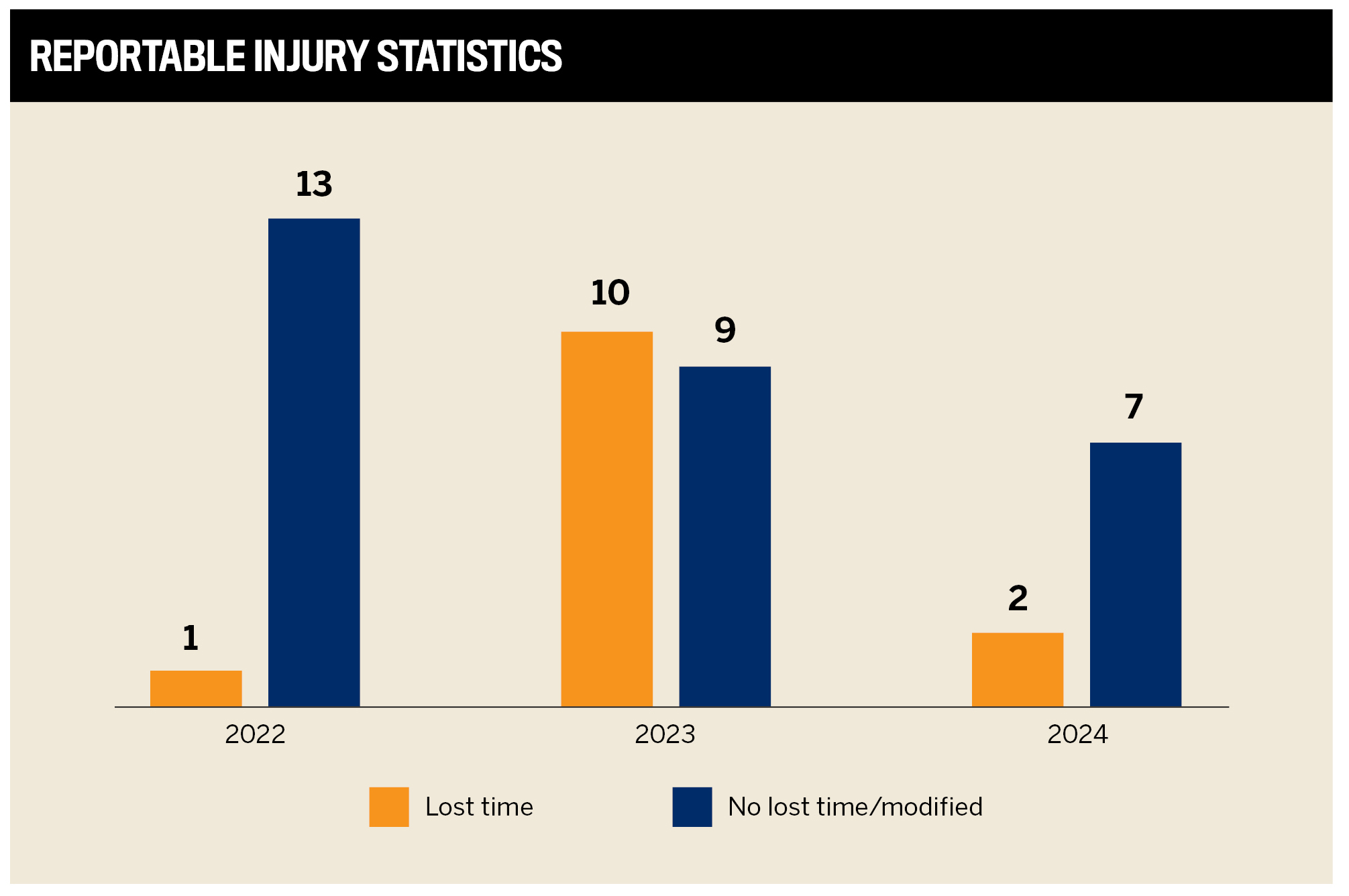
Another area in which Greenview directs resources is driving safety, which again relates to the large area it encompasses. The program was developed through an evaluation of recorded incidents and a commitment to preventing more serious accidents.
Over the past year, Greenview has partnered with an enforcement team to create a specialized presentation addressing vehicle and trailer incidents. Travelling across the municipality, they work alongside CPOs to educate staff on cargo and load securement, weight and dimension regulations, and relevant provincial legislation.
Additionally, daily safety videos covering essential driving best practices are provided, including winter driving, collision prevention, and wildlife hazards, reinforcing a culture of safe and responsible driving.
Kaemingh says, “Safety is deeply embedded in our organization, with employees and leadership working together to create a positive, protected, and inclusive work environment where every team member is valued.”
HQ: Lake Huron, Ontario
Industry: Energy
Employee size: 500+
For Canada’s only private sector nuclear generator, which annually produces 30 percent of Ontario’s power and has invested $13 B in private dollars into publicly owned assets, safety is of paramount importance.
Part of the firm’s successful strategy has been to rewrite their Hazard Recognition Program to include energy-based safety, as studies conclude that people only identify less than half (45 percent) of the hazards they encounter during their workday.
“All injuries are a result of people coming into contact with an energy source. The simple premise is energy causes harm, more energy causes more harm, and direct controls save lives,” says Vicky Skinner, governance and oversight director.


The Energy Wheel is used to help systematically identify the existence of energy sources in Bruce Power’s work environment during the safe work planning phase.
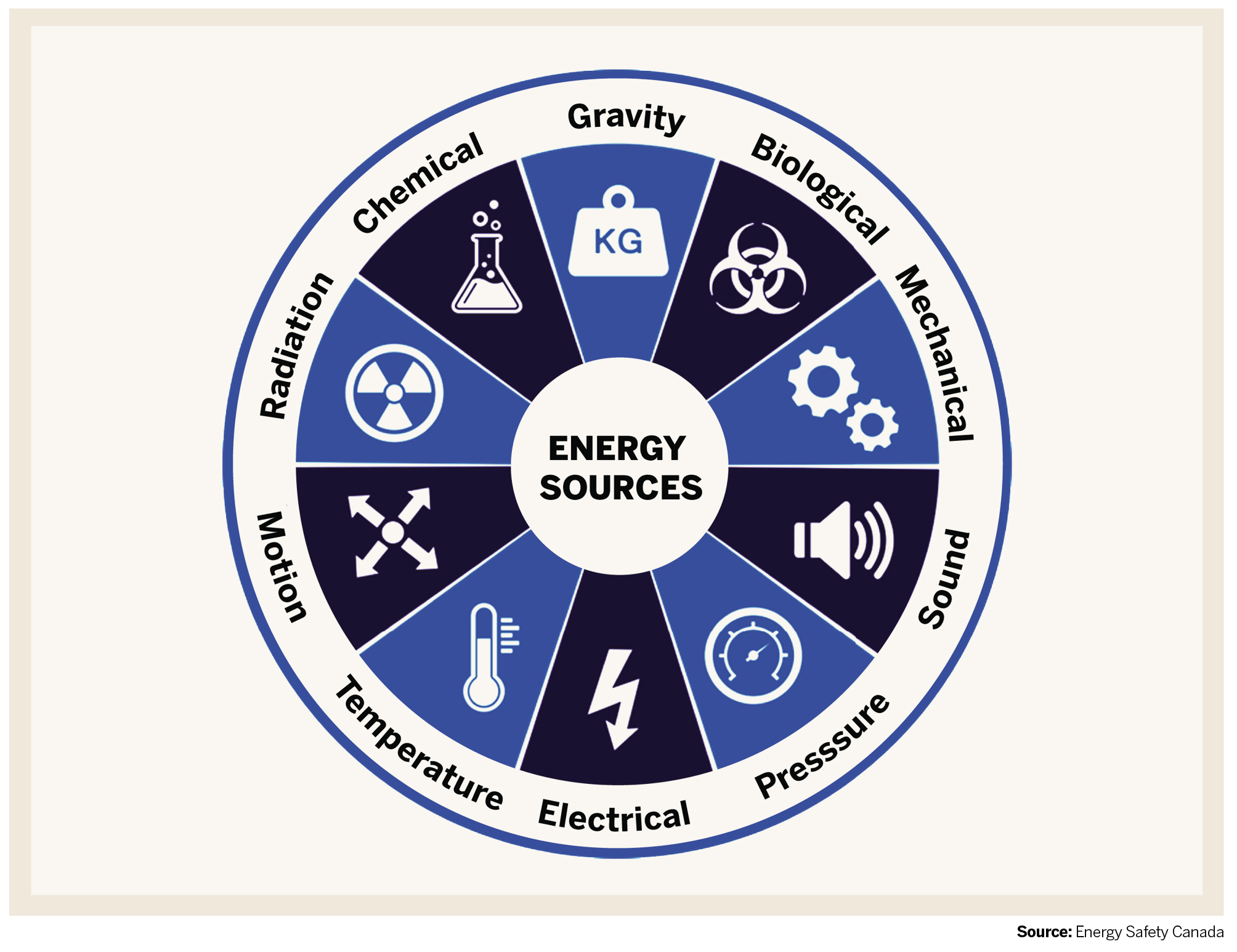
Skinner says, “Once an energy source is identified, the best controls can be determined based on the energy.”
Another of their innovative procedures has been to procure the SlateSafety BAND V2. The armband, designed to be worn on the upper arm adjacent to the skin, monitors heart rate, respiratory rate, and core body temperature. It then delivers real-time alerts to the user via haptic pulses when the core body temperature surpasses a predefined threshold.
 Source: SlateSafety
Source: SlateSafety
Bruce Power’s employees reach overall safety proficiency by undergoing a Systematic Approach to Training (SAT). They focus on clear learning objectives using the ADDIE model:
analysis
design
development
implementation
evaluation
Skinner says, “Although we use a graded approach to learning, SAT is used for critical qualifications where employees touch and manipulate plant equipment or safety-sensitive equipment. Our goal is to develop highly competent personnel who can safely operate, maintain, and improve nuclear systems.”
This extends to maintenance, operations, emergency response, and safety training for both full-time staff and vendor partners who support outage and refurbishment activities.
Bruce Power constantly learns from emerging research and leading-edge safety best practices to ensure they deliver high-quality, effective governance and execute work safely.
“We understand the risks inherent to our work and take effective preventive and protective measures to keep people, the plant, and the public safe,” explains Skinner. “We want to ensure employees consider safety from planning to executing work and that they are involved every step of the way.”
While COS’s 5-Star Safety Culture 2025 winners are leading the way, there is a need for them to be standard bearers.
Canada’s economic makeup means large numbers of individuals are in industries that have relatively large potential dangers.
The oil and gas sector provides 150,000 jobs, while the whole agriculture and agri-food system employs 2.3 million and mining offers jobs to 403,000 people, accounting for roughly one in every 51 Canadian jobs.
Jacobson of Saskatchewan Safety Council says, “Safety has never been a one-size-fits-all approach. Industries with higher risk have tended to lead the way with safety programs and innovations since the early 1900s. Industries such as nuclear power, mining, and oil and gas tend to be at the leading edge due to the serious repercussions of failure, while other industries are at varying places on the safety journey.”
There is also a general trend where industries that tend to have a fewer number of large employers perform better than industries with a large volume of small employers.
Jacobson says, “It is far more difficult for a small employer to acquire the necessary internal expertise and resources than it is for a large employer.”
The COS 5-Star Safety Cultures entry process consisted of two steps: an employer submission followed by an employee survey. For the submission, organizations had to complete an in-depth form asking for details of the safety program initiated over the last year. Companies that successfully completed the submission phase were then sent a link to an online employee survey to be circulated internally.
Organizations had to meet a minimum number of responses to be eligible for the 5-Star Safety Cultures award, based on company size. The survey asked employees to rate their company across a range of metrics that constitute drivers of employee satisfaction. Companies that achieved an overall satisfaction rating of at least 80 percent were recognized as 5-Star awardees.